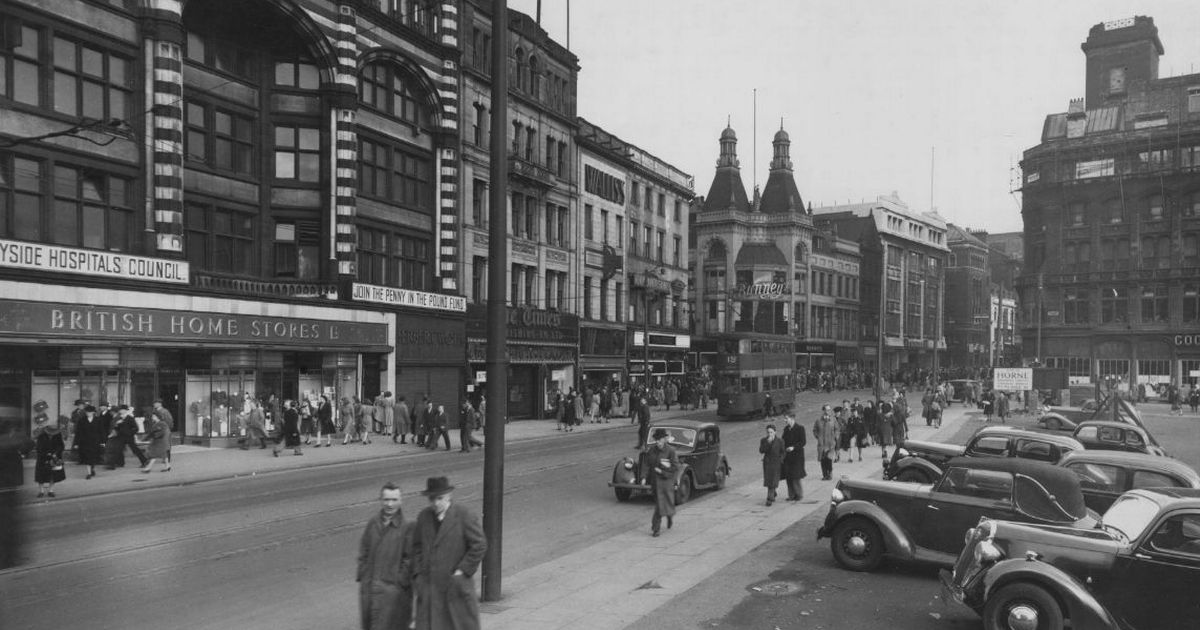The city centre corner was known to generations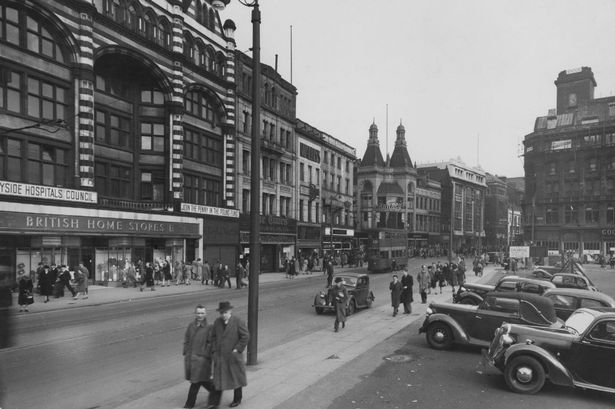 Looking down Lord Street towards Church Street, Liverpool. November 14, 1947(Image: Liverpool Central Library and Archives)
Looking down Lord Street towards Church Street, Liverpool. November 14, 1947(Image: Liverpool Central Library and Archives)
A day out in their own right, department stores have long been at the heart of our high streets – and many of our memories. Through the decades, Liverpool has been home to big names from Blacklers and Lewis’s to George Henry Lees, Owen Owen and more.
Whether it be shopping for essentials, Christmas shopping or simply during a weekend visit to the city centre, customers could find everything they needed all under one roof. And while we have long said goodbye to some of Liverpool’s most famous stores, only certain generations will remember one city centre department store that once stood on the corner of Church Street and Chapel Street.
Founded in 1881 by Mr A.H. Bunney, Bunney’s department store sold everything from clothing to household essentials, toys and more. Mr A.H. Bunney started the family business with one shop located at 5 Church Street, later acquiring the huge corner premises.
READ MORE: Mates from city centre estate finish what they started 47 years agoREAD MORE: 55 vintage baby names for boys and girls that are making a comeback
In the 1890s, Bunney’s became a limited company and when Mr Bunney died in 1935, the family empire was taken over by his sons, Ernest and Walter. Long before the days of mobile phones, social media and the internet, meeting friends required a bit more planning.
And while many in our city will remember arranging to meet under Lewis’s ‘Dickie Lewis’ statue, older generations would often say “see you on Bunney’s corner.” The building stood out in the city centre for its distinctive twin towers, seen in rare images from the archive.
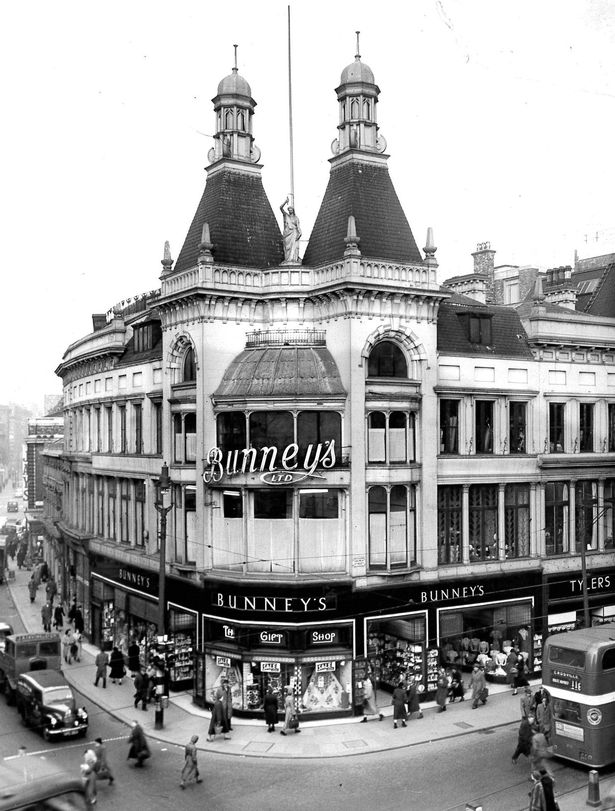 Bunney’s department store stood on the corner of Whitechapel and Church Street until the 1950s(Image: Trinity Mirror Copyright)
Bunney’s department store stood on the corner of Whitechapel and Church Street until the 1950s(Image: Trinity Mirror Copyright)
One image show, courtesy of Liverpool Central Library and Archives, shows Bunney’s in the background during World War II. Another image, courtesy of our archive, shows a view of British Home Stores from Lord Street, with Bunney’s in the distance.
But for a closer look, a fascinating photograph from 1956 shows customers queuing around the block for a sale. Printed in the Liverpool ECHO in 1998 for a feature on Liverpool’s “golden age of shopping,” the notice above the window at the time told customers that they could “not afford to miss this event.”
An advert for Bunney’s department store, courtesy of the British Newspaper Archive, was printed in the Liverpool ECHO on November 28, 1938, and also offers a glimpse into its past. Promoting its Christmas bargains, at the time, customers could get their hands on everything from cosy bedroom slippers to lamps, billiard tables, stationary, tea trolleys, watches and more.
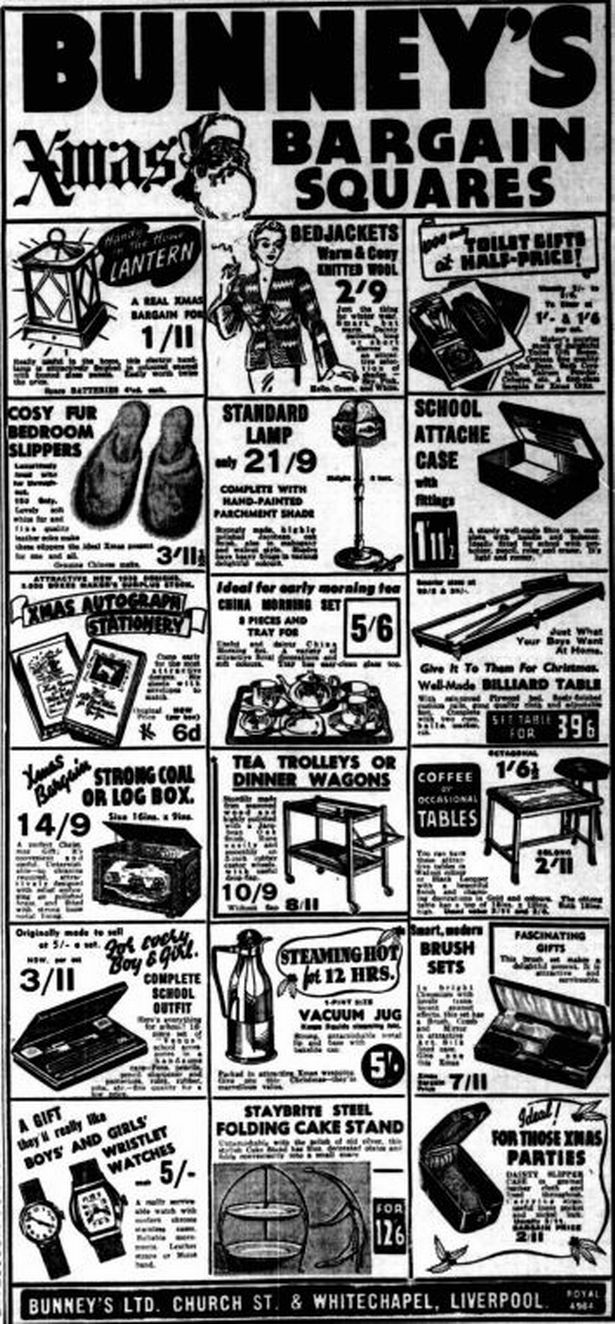 An advert for Bunney’s department store printed in the Liverpool ECHO on November 28, 1938(Image: BRITISH NEWSPAPER ARCHIVE/LIVERPOOL ECHO)
An advert for Bunney’s department store printed in the Liverpool ECHO on November 28, 1938(Image: BRITISH NEWSPAPER ARCHIVE/LIVERPOOL ECHO)
But after decades in the city serving generations of Liverpool shoppers, the 1950s saw the end of Bunney’s as customers knew it. On February 15, 1956, the Liverpool ECHO reported how a development was proposed for a new building on ‘Bunney’s corner.’
At the time, it was announced Greenwoods hosiers and outfitters ltd, from Bradford, had taken over and were negotiating with Liverpool Corporation regarding the development of the site. The article reads: “The position occupied by Bunney’s ltd store at the corner of Church Street and Whitechapel is one of the most valuable in Liverpool and it is estimated that the proposed new building will cost £200,000.
“It is expected to transform what has been popularly known for many years as Bunney’s Corner. The scale of the business will also involve a sum of about £200,000.
READ MORE: Last day inside ‘best’ Liverpool shop that’s still missed in the cityREAD MORE: Merseyside dad continuing tradition that stretches back centuries
“Greenwoods, it is understood, intend to convert the store which will be the largest in their chain of 138 stores in all parts of the north into a textile store selling men’s outfitting womenswear and drapery. This is Greenwoods first investment in Liverpool.
“Bunney’s also have a store at Llandudno and this, too, is included in the take-over, which takes place on March 1. The reason given for the change of ownership is the retirement from business of the present directors of Bunney’s.
“Mr. Ernest Bunney (managing director), Mr Walter Bunney, Mr F Bissel and Mr H. L. Fowler. The first was founded in 1881 by the late Mr A.H. Bunney, the father of the two present directors.”
At the time, Bunney’s had more than 100 staff in Liverpool and around 20 in Llandudno. The following year, it was announced that demolition work had begun on the corner.
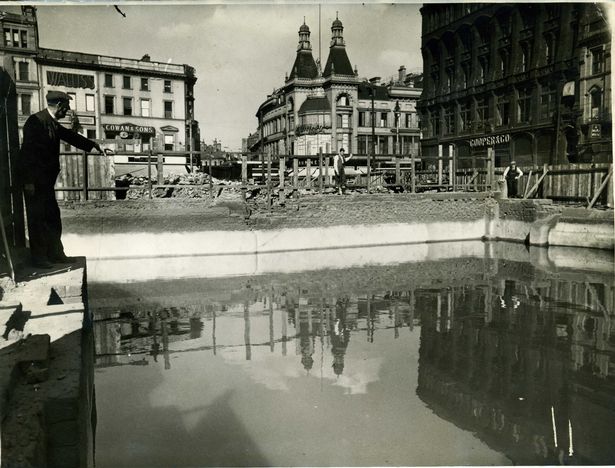 One of the emergency static water supply reservoirs constructed in Liverpool during the Blitz. The water is contained in the basement of a building destroyed by a bombing raid. The picture shows Cooper’s and Bunney’s shops, at the corner of Church Street and Whitechapel(Image: Liverpool ECHO)
One of the emergency static water supply reservoirs constructed in Liverpool during the Blitz. The water is contained in the basement of a building destroyed by a bombing raid. The picture shows Cooper’s and Bunney’s shops, at the corner of Church Street and Whitechapel(Image: Liverpool ECHO)
It was reported the development has been “designed to improve the appearance of a dominant corner site in the city’s shopping centre by replacing old property with a new attractive four- storey building.”
In October that year, it was announced Greenwoods would remain open until after the coming Christmas, before closing down until the new store was built. in later years the site where Bunney’s once stood became home to North End Music Stores – known as NEMS – a popular record retailer established by Beatles manager Brian Epstein’s family.
In more recent years, a new building was erected on the site as part of the Liverpool ONE development, opening as Forever 21. Today, Next calls the building home – but some still remember the days of Bunney’s and how different this area of the city centre once looked.
